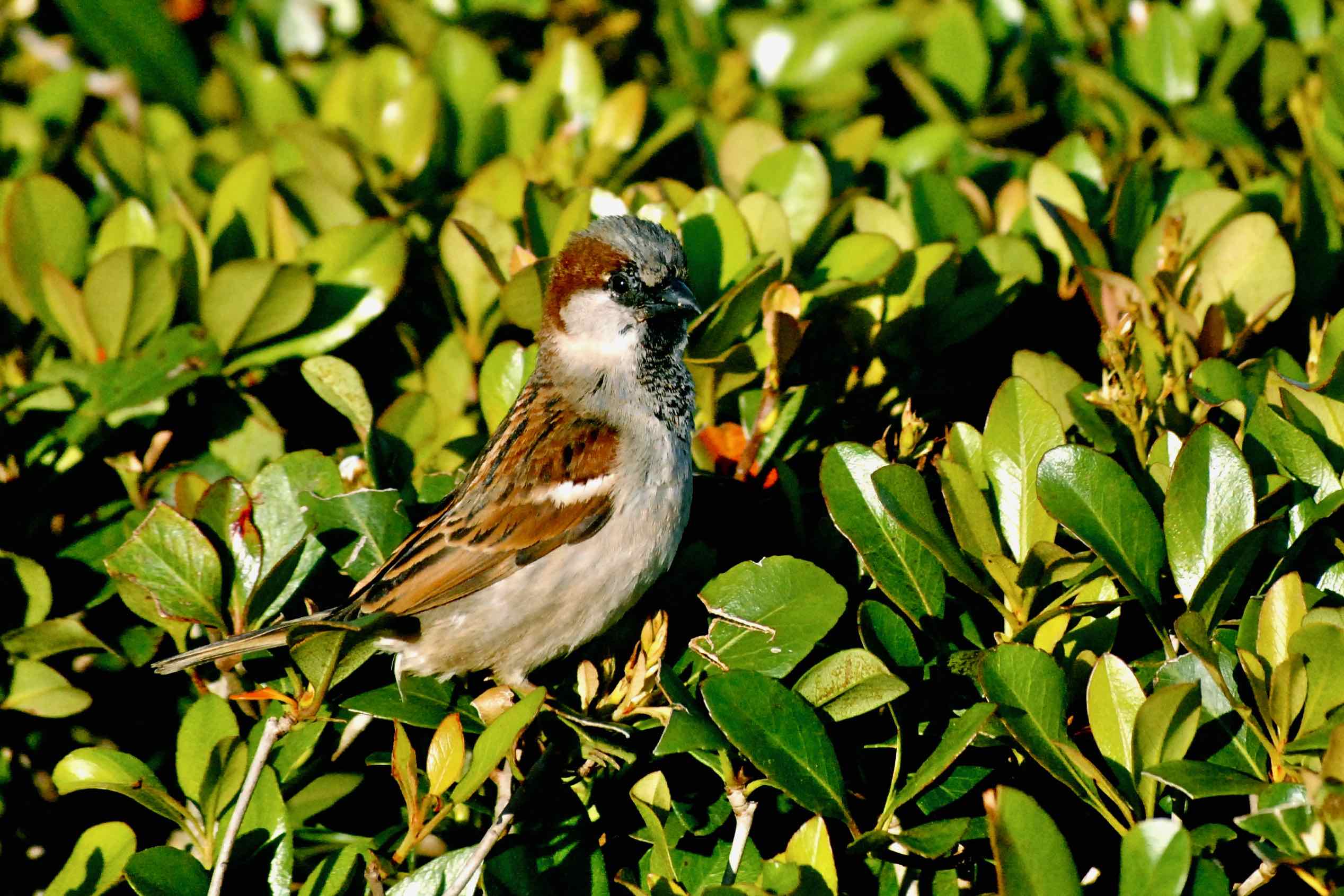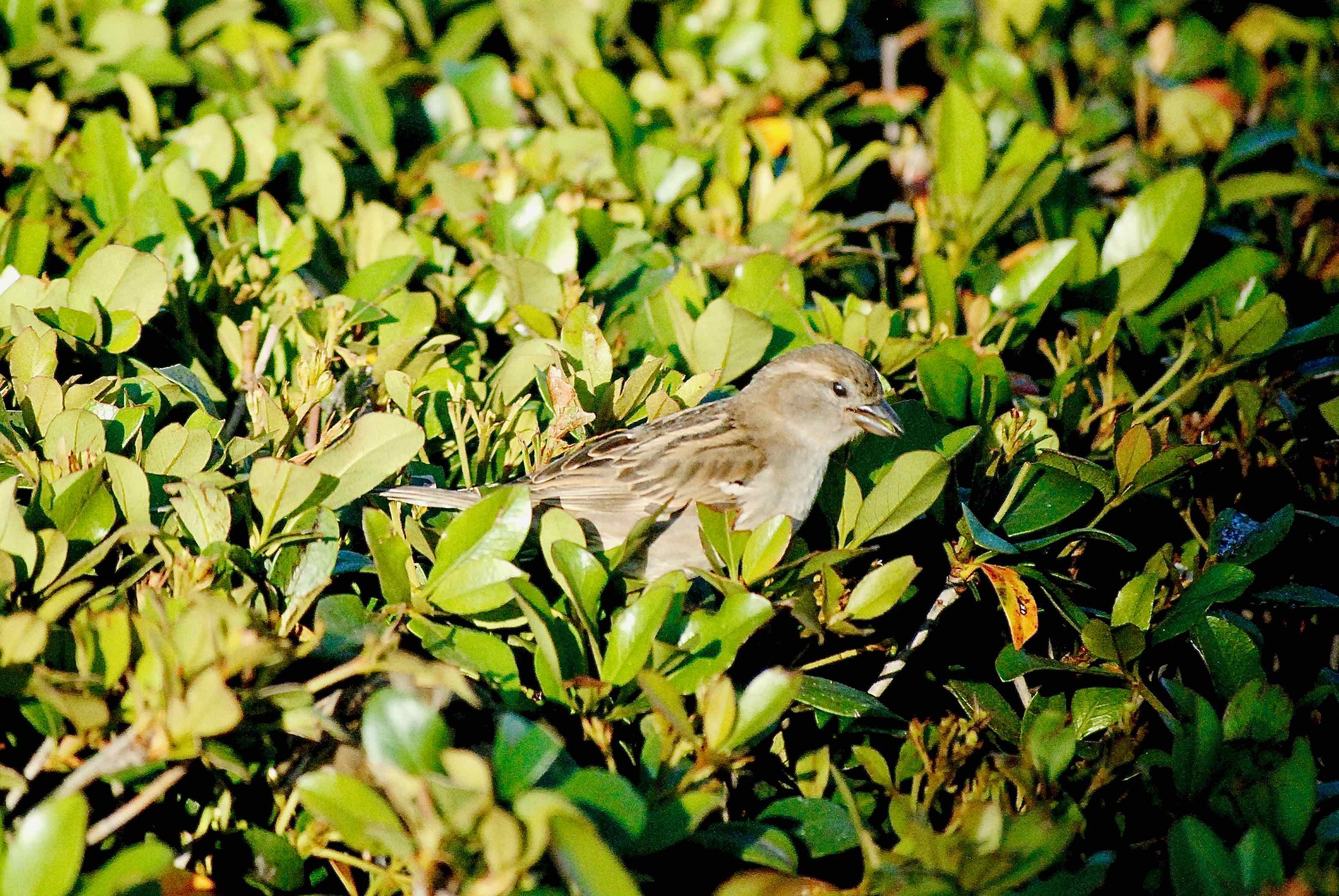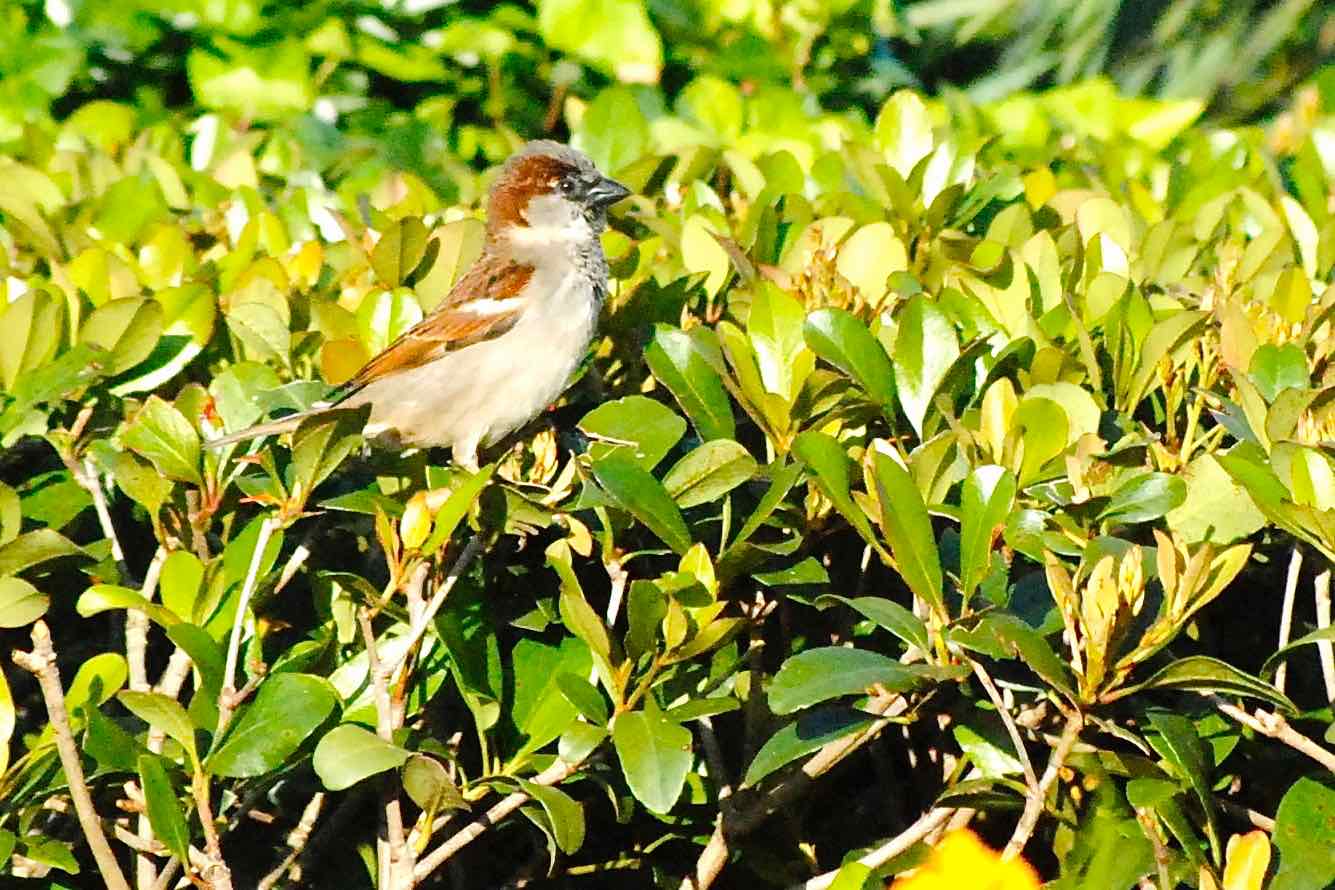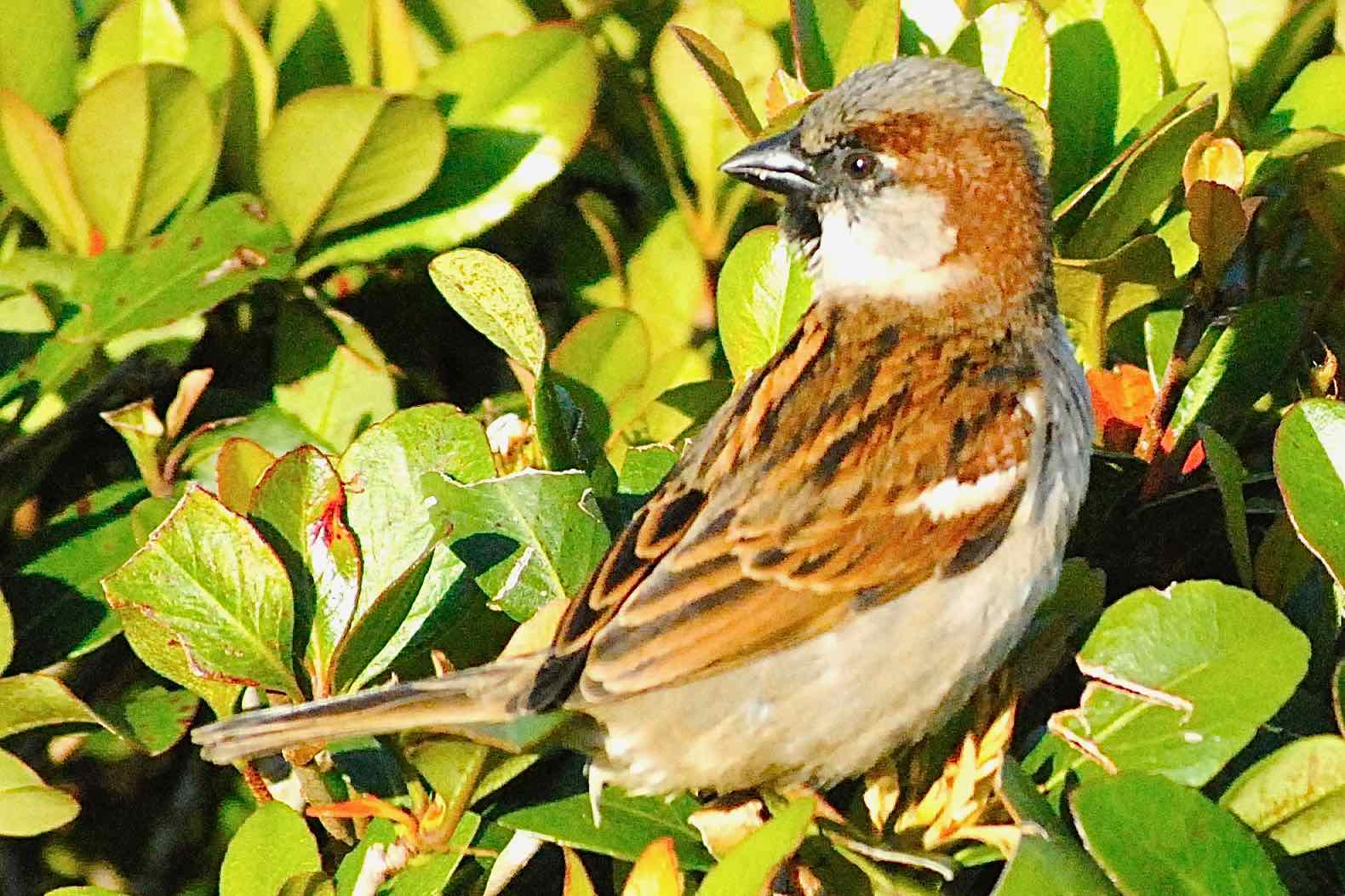
House sparrow, photographed at Epcot, Reedy Creek Improvement District, Orange County, in March 2014.
The story of the house sparrow, Passer domesticus, is truly strange. This little bird is found almost all over the world, imported to many corners and then scorned for that very reason.
It is something of a nuisance but an incredibly successful one. It thrives in our presence; in some places, requires our presence.
In the early 1850s, one Nicholas Pike, director of the Brooklyn Institute in New York, decided to import this bird from England. The first few attempts to establish the bird weren't successful but eventually the house sparrow took hold when the birds were released into Greenwood Cemetery, Central Park and a few other places. The rationale apparently was the control of some bug called a canker worm. The sparrow supposedly would pig out on the critters and reduce the canker worm population. Soon, cities and towns throughout the country were importing house sparrows to "aid people against encroachment of insects."
But others soon noticed that house sparrows don't have much of an appetite for bugs. On top of that, they were driving out native songbirds.The infatuation with the house sparrow turned to hatred, so much so that some states began paying bounties for dead sparrows. However it was too late; house sparrows had spread throughout the continent.
They're now found as far north as Canada's Northwest Territories and as far south as Cape Horn, the remote tip of South America. That extreme range indicates how adaptable house sparrows are. They can be found anywhere there are people, in big cities and small towns, in suburbs and around farms. The only place they're not found: deep, deep woods. In more extreme locales, they require human presence to survive.
By 1882, house sparrows had made their way to Florida, first spotted in Lake City. By 1930, they had been found as far south as Homestead, according to the Florida Fish and Wildlife Conservation Commission. They're found pretty much everywhere in the state except the Everglades, deep forests and portions of the Keys. They've even nested on Garden Key in the Dry Tortugas National Park, about 75 miles west of Key West. The FWC suggests that "store sparrow" might be a more fitting name because of the bird's habit of hanging around shopping centers.
They are small, though bigger than native sparrows, reaching six or seven inches long, with a wingspan of eight to 10 inches. Males are brightly colored, with a gray skull cap, rufous sides and wings and a black "beard." The beard becomes more prominent during mating season. Females are duller, more buff (see photo, bottom left).
House sparrows nest mostly in holes, natural, like trees cavities, or man made, like dryer vents. They are aggressive birds and will drive out other species in order to establish a home. Both sexes build the nest, which is made of dry grass and other vegetation, and lined with finer material, like feathers. Females lay as many as eight eggs, which hatch in about two weeks. The offspring fledge in another two weeks. In Florida, nesting season runs between March and August.
House sparrows eat grains and seeds, both wild and domesticated. Wild seeds on their menu include crabgrass and ragweed They eat insects but they're low on the list of favorites.
House sparrows are members of Passeridae, the family of old-world sparrows.



